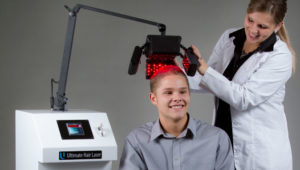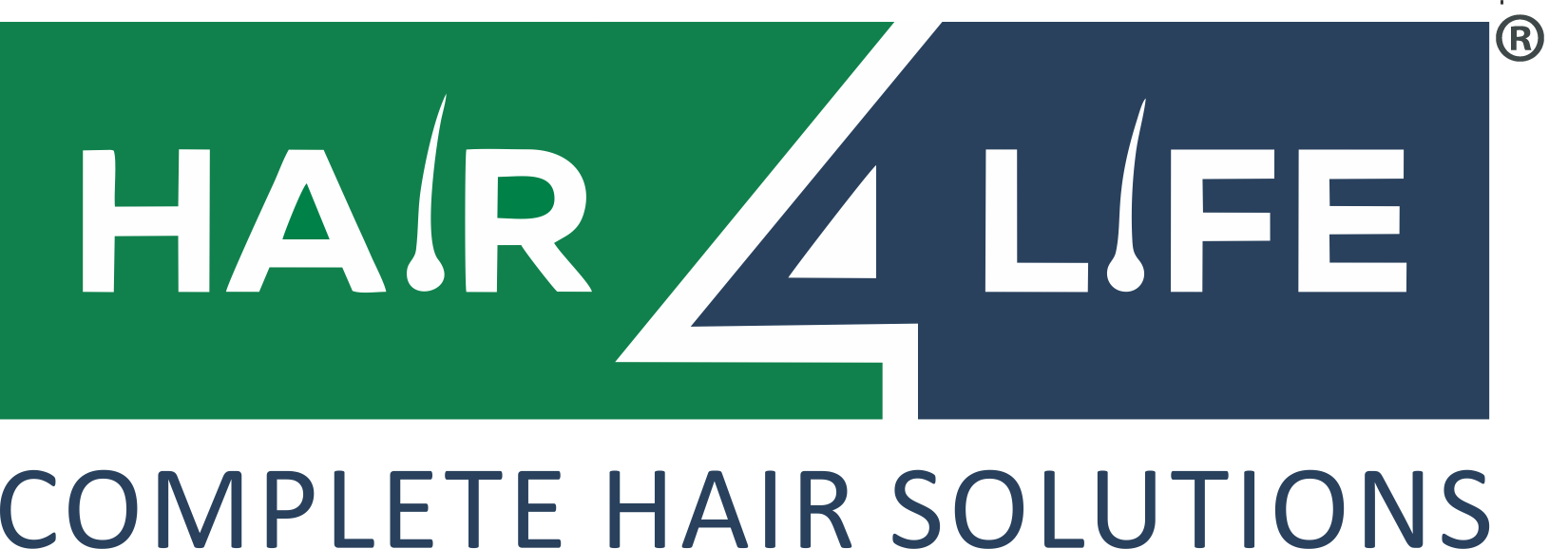H4L® Laser Therapy Benefits :-
 1) Stop hair loss
1) Stop hair loss
2) Save and thicken existing thin and weak hair
3) Re-grow hair in areas where the hair follicles are still alive but not dead
4) Improve scalp condition
5) Improve the quality and texture of hair
Low dose laser therapy for hair loss
What is low dose laser therapy?
Low level laser therapy is a safe form of light treatment (a type of ) under investigation for a variety of health indications. It is being used to treat the genetic forms of hair loss common in men and women, androgenetic alopecia or pattern balding.
Low level laser therapy is also called red light therapy, cold laser, soft laser, biostimulation and photobiomodulation.
Pattern balding
Androgenetic alopecia can affect up to 70% of men (male pattern balding) and 40% of women (female pattern balding) at some point in their lifetime. While men typically present with a distinctive alopecia pattern involving hairline recession and vertex balding, women normally exhibit a diffuse hair thinning over the top of their scalps. For both men and women, losing their hair is a frustrating experience.
The current treatment standard for pattern balding is therapy with minoxidil and finasteride, with hair transplantation as a surgical option. However, low level laser treatment for hair loss is now also promoted as a safe alternative or additional treatment.
Low level laser therapy for pattern balding
Laser therapy used for hair loss treatment depends on devices that emit a light that can penetrate the scalp. Excimer (308 nm), helium-neon (632.8 nm), and fractional erbium-glass (1550 nm) lasers have been used. Low level laser therapy (LLLT) uses devices with diodes that emit red light (wavelength 630-670 nanometers), available as:
- In-salon hoods or overhead panels
- Bonnet or head caps
- Hand-held devices.
Who are the best candidates for low level laser therapy for hair loss?
Low level laser therapy is intended for men and women with thinning hair or pattern baldness caused by a hereditary condition.
Physicians use a system known as the Norwood-Hamilton Classification (men) and the Ludwig-Savin Scale (women) to describe the degree of hair loss. Low level laser therapy is intended for promotion of hair growth in males who have Norwood Hamilton Classifications of IIa to V and in females who have Ludwig (Savin) I-4, II-1, II-2, or frontal patterns of hair loss and have Fitzpatrick skin phototypes I to IV.
How is laser hair therapy supposed to work?
The hair growth cycle consists of three phases: growth (anagen phase), resting (telogen phase) and shedding (catagen phase). Hair loss in androgenetic alopecia depends on a testosterone derivative in the skin, dihydrotestosterone (DHT). Low level laser therapy is believed to increase blood flow in the scalp and stimulate metabolism in catagen or telogen follicles, resulting in the production of anagen hair. In theory:
The photons of light act on cytochrome C oxidase leading to the production of adenosine triphosphate (ATP). This is converted to cyclic AMP in the hair follicle cells, releasing energy and stimulating metabolic processes necessary for hair growth.
Release of nitric oxide from cells leads to increased vascularization to the scalp distributing nutrients and oxygen to the hair roots.
Excessive build-up of DHT is prevented.
What is the clinical evidence to show laser hair therapy is effective?
Physicians have varying views on whether or not low level laser therapy is effective. While some physicians reject its use entirely, others believe that low level laser therapy can provide benefit for some men and women suffering from androgenic alopecia (genetic baldness). It has also been suggested that it may assist a hair transplant patient’s postoperative wound healing process and expedite hair growth.
Results of a double-blind, sham device-controlled, randomised multicentre trial have shown that 110 male patients with Norwood-Hamilton classes IIa-V androgenic alopecia, exhibited a significantly greater increase in mean terminal hair density compared with subjects in the sham device group after 26 weeks therapy with the laser light comb (p <0.0001).
Macro photographs of the scalp were captured of all of the subjects at the beginning and end of the trial and sophisticated hair counting software was used to determine the number of normal-sized hairs that grew as a result of using either device.
Hair growth in subjects who used laser therapy increased by an average of 19 normal-size hairs per square centimeter, while it decreased by an average of 7 normal-size hairs per square centimeter in those using the placebo device.
Consistent with this evidence for primary effectiveness, significant improvements in overall hair regrowth were demonstrated in terms of patients’ subjective assessment (p < 0.015) at 26 weeks over baseline.
Treated subjects also experienced more favorable hair attributes, such as thicker, shinier, and more manageable hair compared to those who used the placebo device.
No statistical improvement was noted on global investigator assessment.
Similar study results have been reported in a double-blind device controlled study in women with androgenic alopecia.
In a second study of 103 males and 122 females with pattern alopecia that completed the study, with 12, 9 and 7 beams was reported to result in increase in terminal hair density compared to similar trial subjects treated with a sham device.
However, published trials of low level laser light have been criticized as not being independent and anedotal individual reports of using these devices appears disappointing.
Benefits of laser therapy for hair loss
- Low level laser therapy can be used in both men and women
- No adverse effects have been reported
- It is clean and painless
- Low level laser hair therapy is relatively inexpensive
- It requires minimal time commitment
- Some low level laser therapy devices are portable
- Hair growth may occur on the top of the head/crown and along the hairline of forehead
- Improvement is reported in at least some users after 12 to 26 weeks of use, with reduced hair fall and noticeable hair growth.
How is low level laser hair therapy administered?
Laser hair therapy may be delivered in a salon by professionals trained in its administration, or at home.
Two to three times weekly treatments are typically recommended, and consist of a 8 to 15-minute exposure of the scalp to light-emitting diodes under a bonnet or head cap or using a handheld comb or brush.Scalp treatment and massages that promote blood circulation may be used additionally as part of the program.Proprietors of low level laser therapy services speak about the importance of regularity, which includes frequent appointments (twice a week, more or less) over a long duration (typically one year).
Warnings and caution
Laser therapy should not be used concomitantly with medications or products that are photosensitizing (see drug-induced photosensitivity)
For more details GET IN TOUCH
